
Cartoon critics Phil Witte and Rex Hesner look behind the gags to debate what makes a cartoon tick. This week our intrepid critics take a look at Crime and Punishment.
Long-running television dramas, such as the CSI series, attest to our enduring fascination with crime and punishment. Likewise, cartoonists find the subject irresistible, as over 30,000 drawings on CartoonStock attest.
When it comes to depictions of crime, Edward Steed is a master of the macabre. His Mafia-inspired gag deserves an “R” rating for violence and smoking. His use of color, blood red, is chilling. Yet, somehow, it’s a devastatingly funny cartoon.
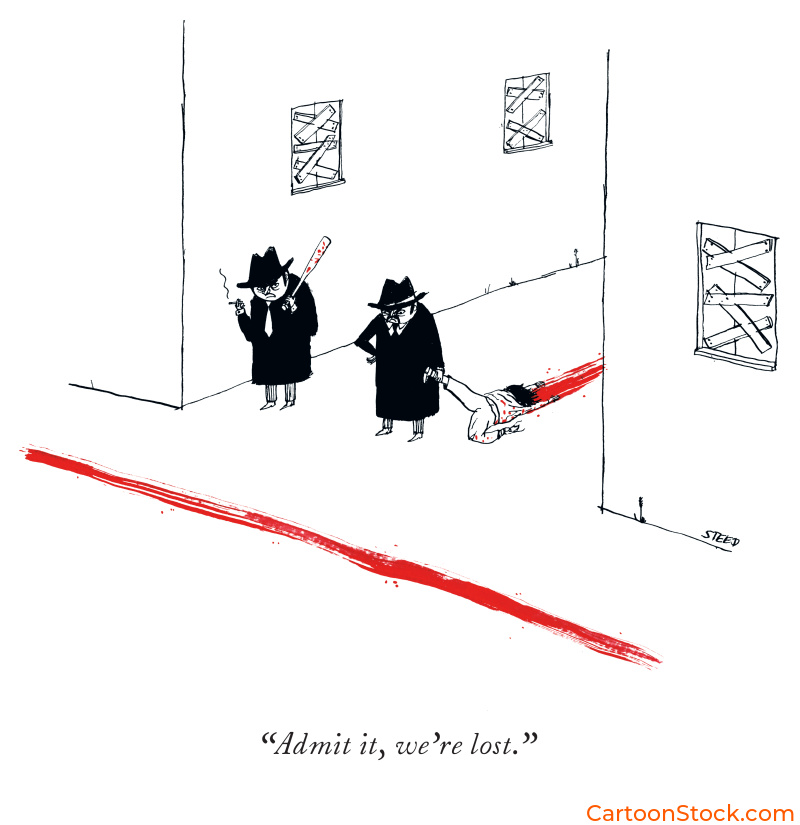
In the modern era, sophisticated computer crimes have replaced old-fashioned smash ’n’ grab techniques. Some criminals, however, remain traditionalists. P.C. Vey conjures up an old-school throwback who hasn’t gotten the memo yet.
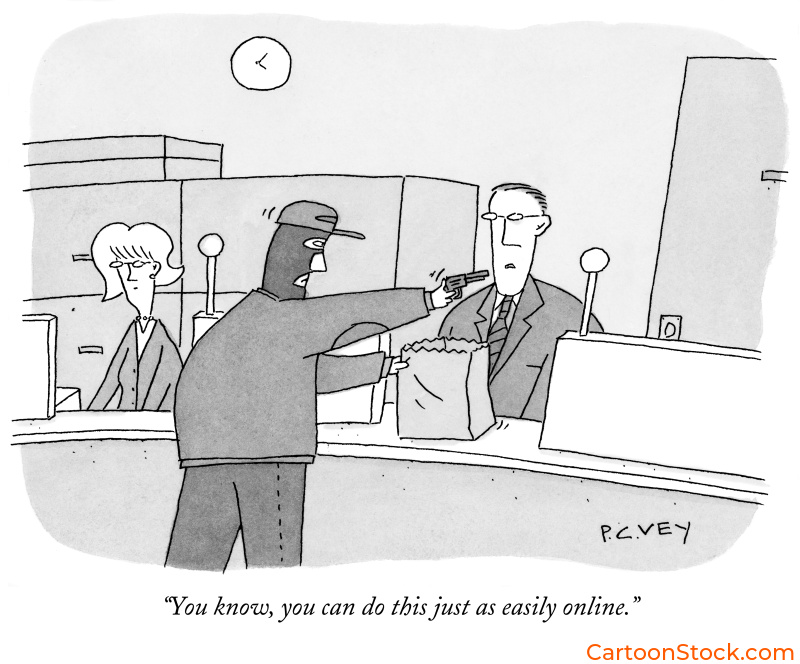
“You know, you can do this just as easily online.”
Like anyone else, criminals also have career paths. The intrepid heist-meisters in Liana Finck’s crime scenario are atop the most rarified of all burglar categories: art thieves. This thief may be working his first museum hit.
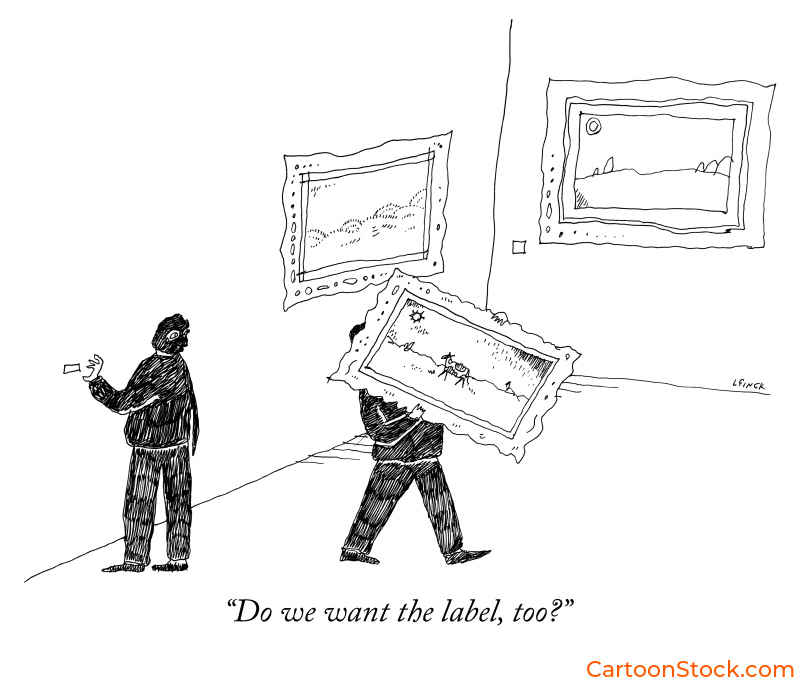
After a crime, law enforcement shows up to start the investigation. The scene itself is ripe with information, bursting with whodunit hints. Investigators are typically looking for … well, read the caption. Shannon Wheeler’s inventive drawing is admirable.
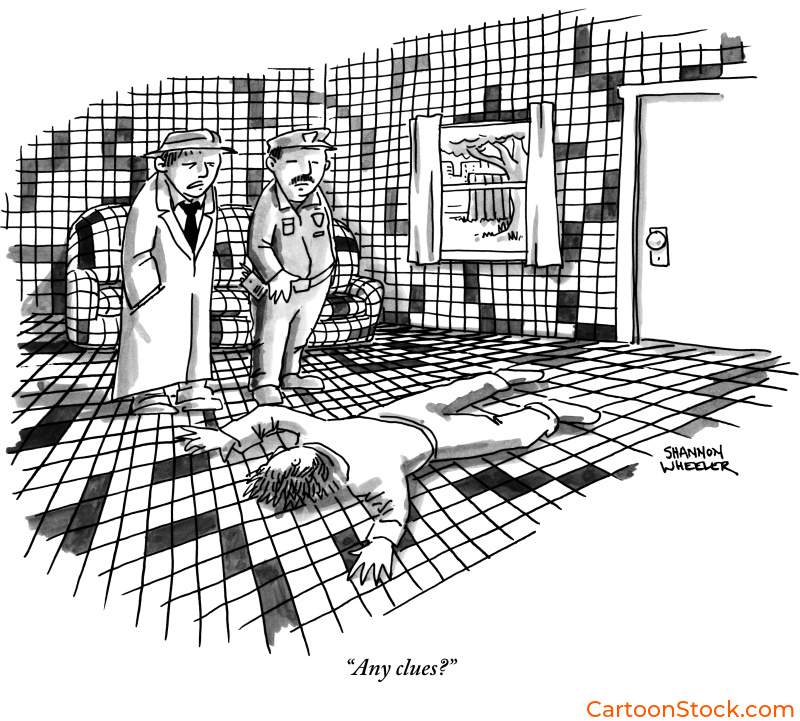
Temptation lurks in every corner, even among our youngest citizens. A birthday party might start out innocent enough, just having fun–then things get out of hand. Benjamin Schwartz needs no words to convey the steep decline of our civilization.
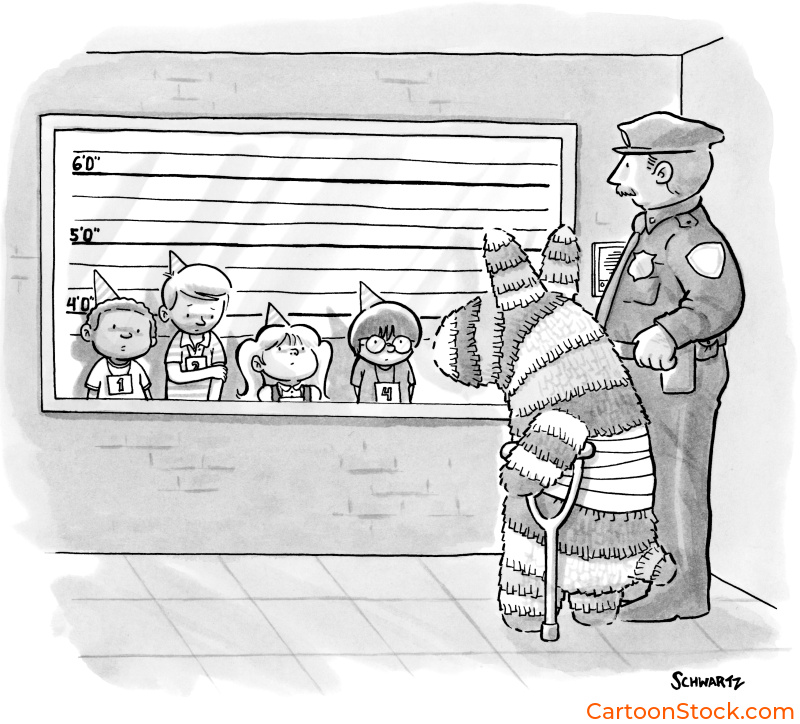
At last, after intense furor, a suspect is brought in for questioning. The citizenry is relieved; the press is having a field day—a confession can’t be far behind. When the time comes for talking, some perps take the tough-guy route; they don’t say a word for days on end. However, as David Borchart imagines, others can’t wait to spill the beans.

The most dramatic moment is an arrest at the crime scene. The perpetrator is caught in the act and subdued– justice triumphs. In Drew Panckeri’s drawing, all the elements are in place: captured weapon on the table, intruder immobilized on the couch, and the homeowner summoning the Federales. It must have been quite a struggle based on the crooked painting over the sofa. The hero? Perhaps improbable, but one in whom we’d like to believe.
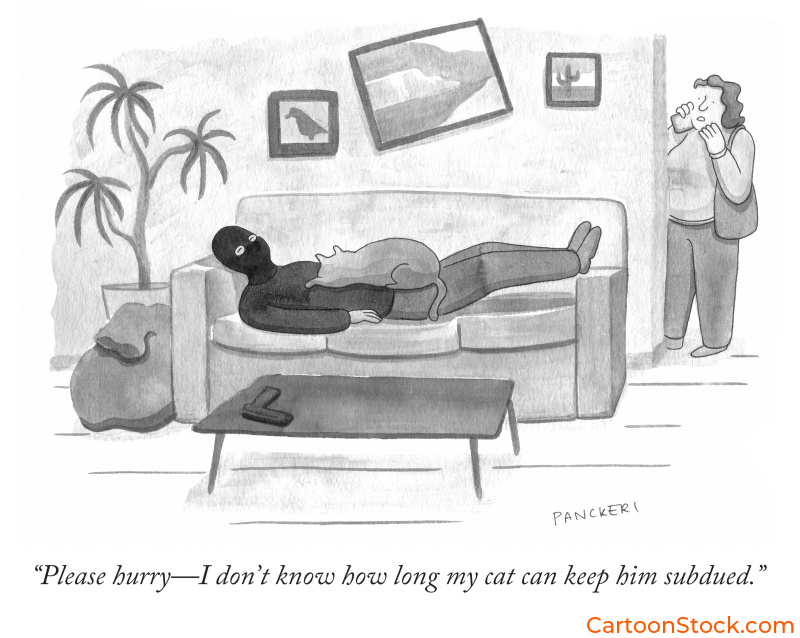
What’s in a name? But, of course, it doesn’t help when the defendant’s moniker undermines his assertion of innocence. Prosecutors are skilled at swaying juries with sly innuendo. Fortunately, Jack Ziegler has come to the aid of his ocean-loving client with an aggressive defense attorney.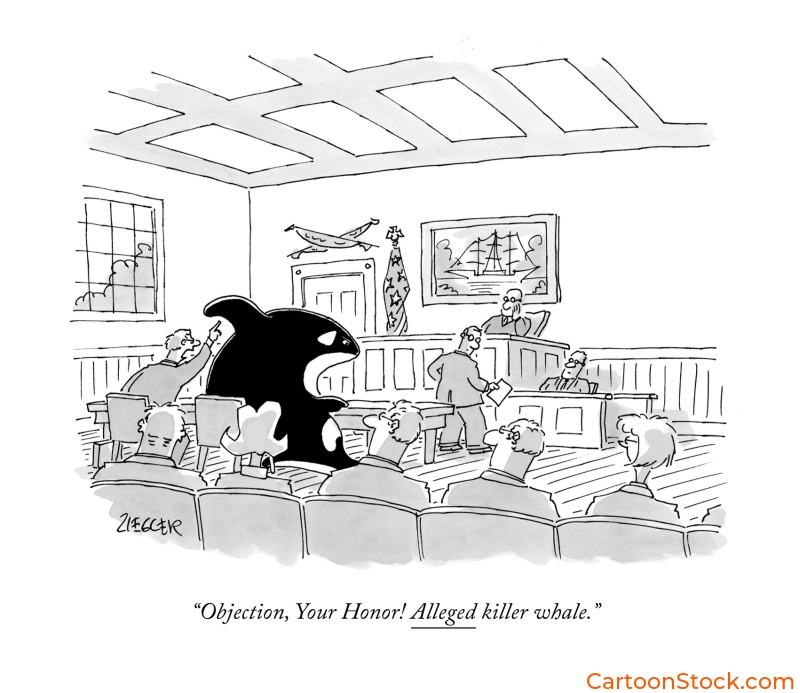
The judge, in this case, is a stickler for protocol. Consequently, the defendant is counting on the court’s mercy. Charles Barsotti captures this tense courtroom drama with the brilliant use of a single line: to define the floor, the imposing distance up to the judge, and the judicial bench itself. He is a master of economy, yet nothing is missing … except leniency for a cuddly puppy.
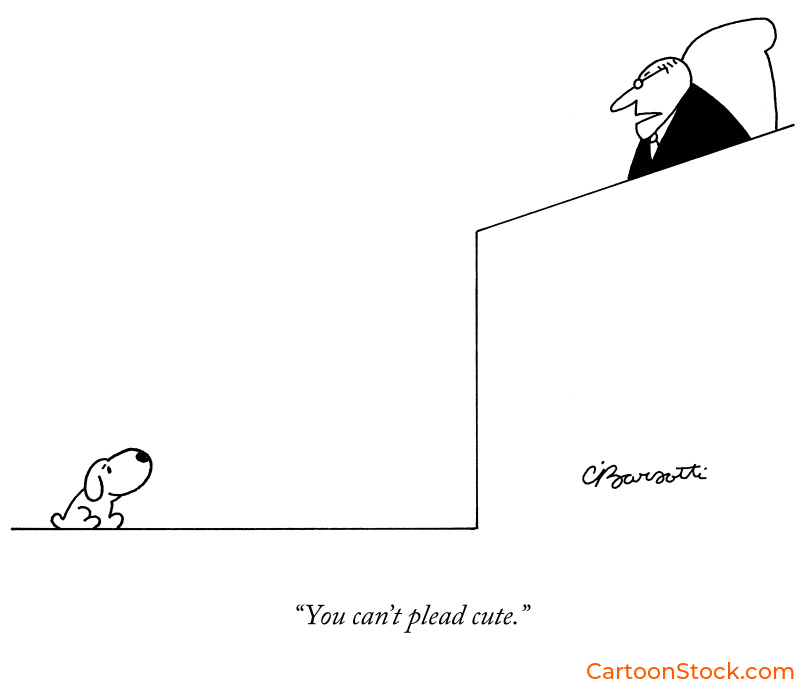
The centerpiece of American jurisprudence and most crime shows is the jury trial. We’ve come to expect tearful confessions, shocking evidence, and an emotional closing argument. Drew Dernavich imagines the festive aftermath of a hard-fought trial that went the defendant’s way. A two-word, understated caption says it all.
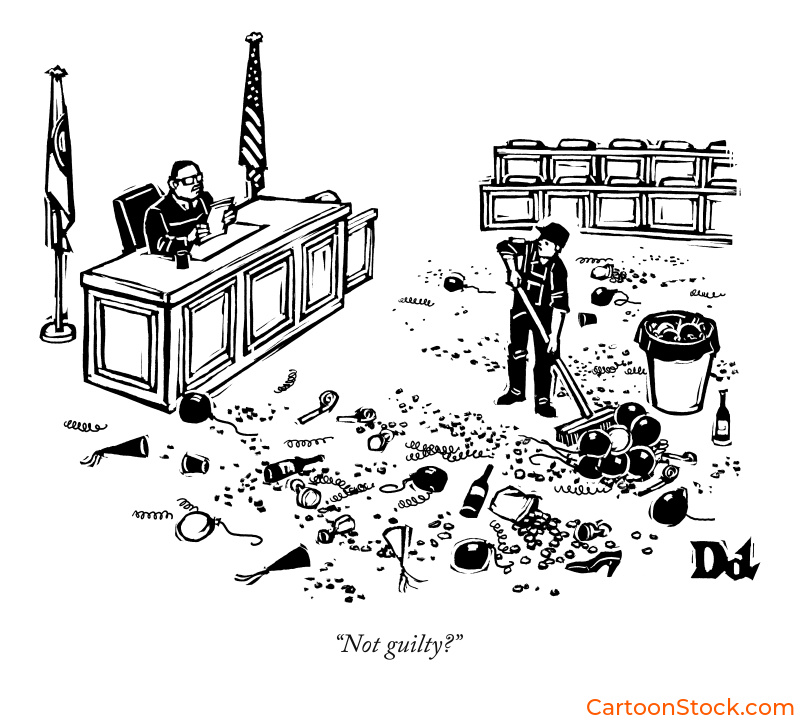
We close with the last stage of our journey—punishment. The unfortunate convict in Mick Stevens’ cartoon has received the ultimate sentence. But in this case, the powers that be have given the victim a sporting chance.
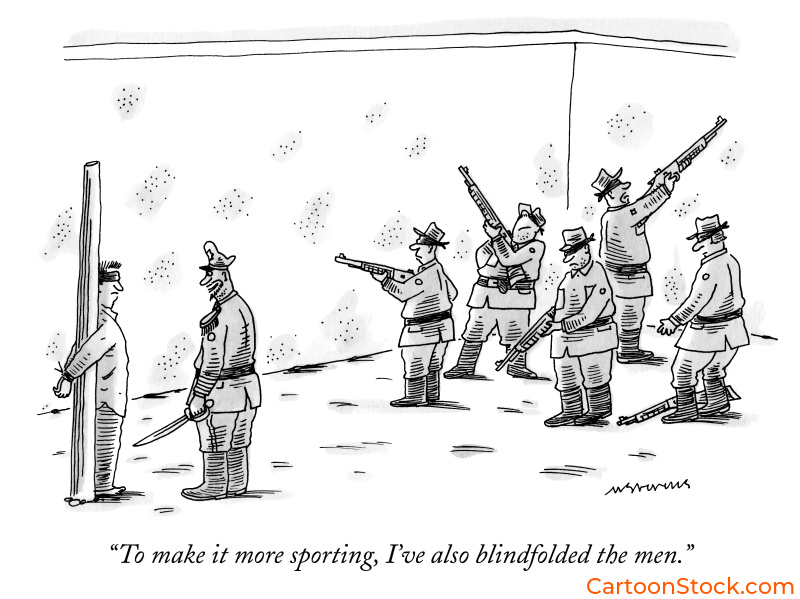
MORE CRIME AND PUNISHMENT CARTOONS

